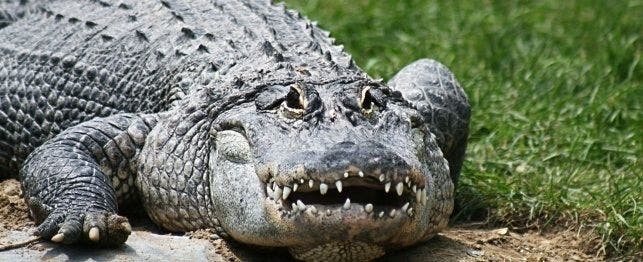
Interesting Crocodilian Facts
Alligators and crocodiles are members of the crocodilian family. This family contains the subfamilies alligatorinae (which includes the alligator) and the crocodylinae (the crocodile). In other words, they are members of different subfamilies.
- You can tell the difference between a crocodile and an alligator by looking at their noses. Alligators have a wide, U-shaped snout, whereas crocs have longer, more V-shaped noses.
- Crocodilian mothers often guard their nests, and when the young are ready to hatch, they vocalize through the eggshell. The female then digs away the covering sand and even carries them delicately in her mouth toward the water. After this, the young will stay in groups for protection
- The oldest known alligator (Alligator mississippiensis) was 66 years old when she died in Australia in 1978.
- The saltwater crocodile (Crocodylus porosus), which lives in the coastal waters off Asia can reach 23 feet and weigh over 2,200 pounds.
- A flap at the back of the throat, and valves in the nasal passages allow a crocodile or alligator to feed submerged without inhaling water, and to breathe while only his nostrils protrude above the water’s surface.
- Crocodilian reptiles, like birds and mammals, have four chambered hearts, whereas the other reptiles have just three chambers; that is, two atria and one ventricle.
- The crocodile’s brain mass is less than 0.5 percent of his body mass. They can smell, hear, see well at night and have a strong homing instinct that may cause them to travel many miles to the location where they were trapped or hatched.
- Teeth are replaced on average once every two years.
- “Paleface,” the well-known white alligator, who lived at New Orleans’ Aquarium of the Americas, died recently, having ingested a coin thrown into his tank by a visitor. Paleface was one of a clutch of white alligators, which were not albinos, but had an extremely rare genetic condition called leucism.